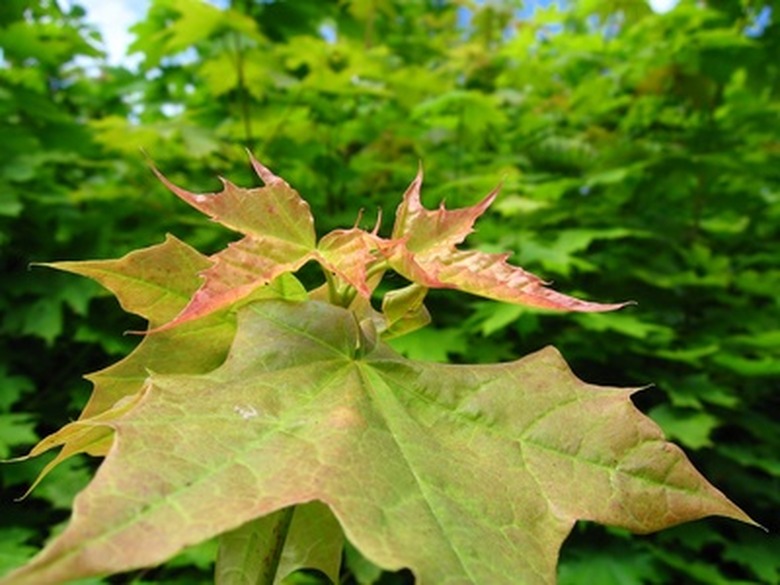How To Transplant Maple Trees
The maple tree is one of the most widely grown landscape trees in America. The trees are treasured for their flowers, shade capacity and their breathtaking fall foliage. The sugar maple is grown for its production of maple sap, which is the number-one ingredient in maple syrup production and also widely used in candies. According to the Massachusetts Maple Production Association, there are thousands of species of maple trees around the world. In North America, there are 13 native species of maple trees that flourish in the wild. A large maple tree can prove difficult to transplant, but smaller-sized maples of less than 6 feet in height can be transplanted with success in the spring.
Step 1
Water the maple tree that is to be transplanted three days prior to digging up the tree. Maple tree roots should never be allowed to dry out during the transplant process or the tree can sustain damage. Watering the soil surrounding the tree will also make digging up the tree easier.
- The maple tree is one of the most widely grown landscape trees in America.
- In North America, there are 13 native species of maple trees that flourish in the wild.
Step 2
Dig the hole two to three times larger than the transplanted tree's root ball. Work organic hummus, such as peat moss, into the soil at a ratio of 50-percent peat moss with 50-percent garden soil.
Step 3
Tie up the lower branches of the maple tree so the tree does not sustain damage during the digging and lifting process. Wrap the rope gently around the branches and tighten so the branches are lifted upward.
Step 4
Dig around the maple tree. Try to dig the hole 2 to 3 feet out from the tree's base. Use a spade shovel to gently push down and upward in order to loosen the root system. If the tree is 6-feet tall than the tap roots run 6-feet deep. Try to remove as much of the root system as possible by working the soil loose around and under the tree. Grasp the tree at the base next to the soil and lift upward. The tree should emerge with the root ball attached.
- Dig the hole two to three times larger than the transplanted tree's root ball.
- Tie up the lower branches of the maple tree so the tree does not sustain damage during the digging and lifting process.
Step 5
Look closely at the tree's root system. Prune back any roots that are broken or severely knotted prior to transplanting.
Step 6
Place the transplanted tree into the freshly dug hole at the transplant site. Push dirt around the base of the tree and firm the dirt. Remove all air pockets between the root system and the garden soil by firmly tamping down. Water the tree thoroughly to settle the soil.
Step 7
Place two stakes on either side of the tree's trunk and tie the tree to the stakes. The garden stakes will give the newly transplanted tree added stability in the event of a storm until the tree's roots are able to recover and firmly hold the tree into place. Untie the tree's branches that were tied up during the transplant process.
- Look closely at the tree's root system.
- Place two stakes on either side of the tree's trunk and tie the tree to the stakes.
Step 8
Add 3 to 4 inches of mulch around the newly transplanted tree. The mulch will help keep weed growth back from the tree and maintain moisture in the garden soil. Peat moss, bark chips, pine needles, sawdust and recycled plastic mulch work well.
Step 9
Wait one month and then fertilize the newly planted maple tree using a 10-10-10 fertilizer. Apply half a pound of fertilizer around the base of the tree. Be careful to not let the fertilizer touch the tree's trunk. Water the tree thoroughly until fertilizer is absorbed into the soil. Repeat the fertilizing process in the fall.
- Add 3 to 4 inches of mulch around the newly transplanted tree.
Tip
A maple tree larger than 6 feet in height should be moved by a professional tree service to ensure the tree's survival.
Things Needed
- Spade shovel
- Rope
- 10-10-10 fertilizer
- Garden stakes
- Cotton rope
- Peat moss
- Mulch
